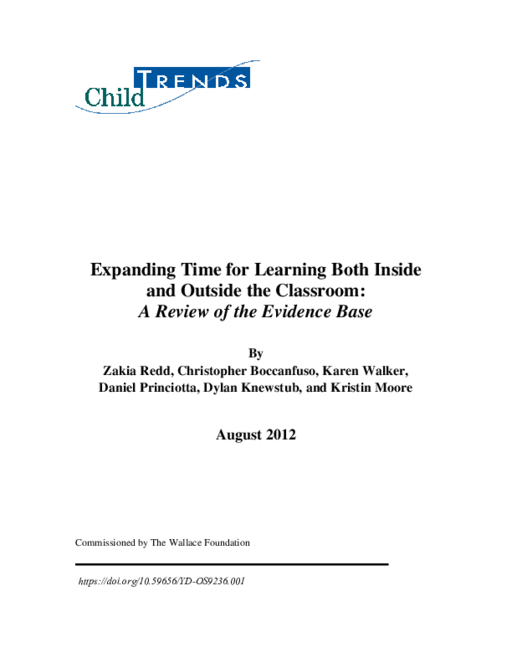Breadcrumb
- Wallace
- Reports
- Expanding Time For Learning Both...
Expanding Time for Learning Both Inside and Outside the Classroom
A Review of the Evidence Base

Overview
More
Less
- Author(s)
- Zakia Redd, Christopher Boccanfuso, Karen Walker, Daniel Princiotta, Dylan Knewstub, and Kristin Moore
- Publisher(s)
- Child Trends
Summary
This report reviews and synthesizes some 80 studies of initiatives that either lengthen the school day or year or offer additional learning opportunities outside of school hours. It emphasizes that most of the studies lack the rigor needed for firm evidence of the impact of such efforts, but the limited findings available suggest expanded learning time programs can be effective in improving a wide range of educational outcomes. Such programs may also provide particular benefit to students from low-income areas and to those who may face academic and other setbacks.
Efforts to lengthen the school day or year help raise academic achievement, as measured by test scores, while out-of-school-time opportunities can boost such precursors to achievement as homework completion, but in all cases, program quality and implementation are critically important. Indeed, poorly implemented programs sometimes have a negative impact on children and teens. Additional random assignment evaluations are necessary to better understand the potential impact of these programs, the report says.

